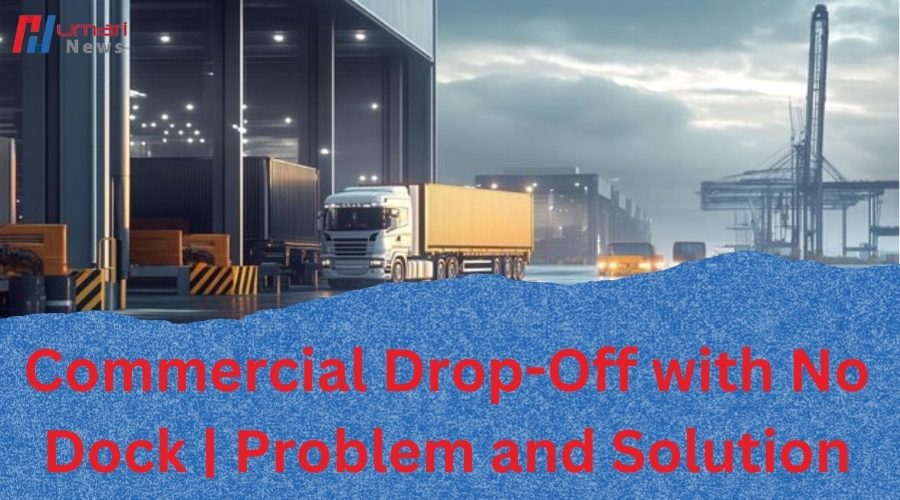What is a Commercial drop-off with no dock?
A commercial drop-off with no dock is a delivery to a business premise that lacks a loading bay which would make the task of offloading easier. This is usual in small retail stores, offices, or business premises in urban areas where it is impossible to develop fully-fledged loading zones.
Such a drop-off is possible in several sectors of the economy such as the retail, accommodation and food service, health care, and some manufacturing industries as well.
Difficulties of a Commercial Unloading with No Dock

1. Manual Labor and Safety Risks
When there is no loading dock available, then the whole procedure of unloading the goods becomes slightly more strenuous. In some cases, drivers may need to transfer goods within the truck, and/or onto the ground using hand trucks or pallet jacks and similar tools.
2. Time-Consuming Deliveries
Some deliveries cannot be done with the use of a dock thus taking longer time. Loading docks enable the backup of a truck into position and toss its payload directly into the building. If this is not an option then the worker is required to take time and construct ramps or use liftgates to lower down the items and this is time-consuming thus delaying the delivery process.
3. Limited Equipment Access
Lift gates are required where there are no docks for offloading. This often poses a major challenge since the delivery may be made using a truck that does not have a liftgate, and if this is not enough, the driver has to unload goods by hand. This can be a problem for large volumes because it may necessitate the use of more personnel or equipment such as forklifts which can sometimes not be easily accessed at the delivery point.
4. Space Constraints
Some businesses lack loading docks and this makes them have little room for distribution. Streets in the urban areas are narrow and parking space for a delivery truck is hard to come by, not to mention, finding a safe and legal parking space is a real challenge. A delivery person may be forced to park some distance from the business, taking additional time and energy to make the delivery.
Another problem is that there is a likelihood of congesting space at the delivery site in case there are several deliveries taking place at the same time, hence making it difficult to unload.
Workable Strategies for Managing Commercial Drop-Offs Without Docks
There are several strategies that the companies can make use of to manage the commercial drop-offs with no dock effectively.
1. Liftgate-Equipped Trucks
Having trucks with lift gates is one of the best approaches to a ‘no dock’ drop, as the name suggests it is a door-to-door delivery truck where the tailgate is hinged at the rear and a hydraulic lift can be raised to provide a level platform at the rear of the truck that is opened for deliveries.
2. Pre-Delivery Planning
It concerns delivery drivers and the logistic teams with a focus on possible available parking lots, roadways, and the size of the delivery area. This is helpful as it gives clues to pertinent issues such as what equipment to bring in or giving ourselves ample time from the actual delivery time.
It is also important for the carrier to be able to communicate with the recipient. Delivery should also be agreed upon between both parties.
3. Use of Smaller Vehicles
compact delivery cars like vans and box trucks may be suitable. Many of these vehicles are utilized in urban centers where they can navigate through small roads which have limited space and be parked where large trucks cannot even get in.
4. Hiring Additional Labor
This is important because it means that there will always be additional people available to handle the unloading of products hence enhancing the speed and efficiency of the process, not to mention the limited.
5. Alternative Unloading Methods
Other unloading methods that can be used include the use of ramps and pallet jacks among others in some occasions.
Conclusion
A commercial drop-off, which lacks a dock, may be challenging as regards to time and energy to deliver the loads and other risks that may be associated with it. Nevertheless, when an organization has developed a good plan in choosing the appropriate equipment to use for delivery, it will easily handle such deliveries when communication has also been well understood.
Since companies keep venturing into urban markets and unconventional locations, efficient peer-to-peer delivery solutions will continue to be the key consideration in today’s supply chains.







